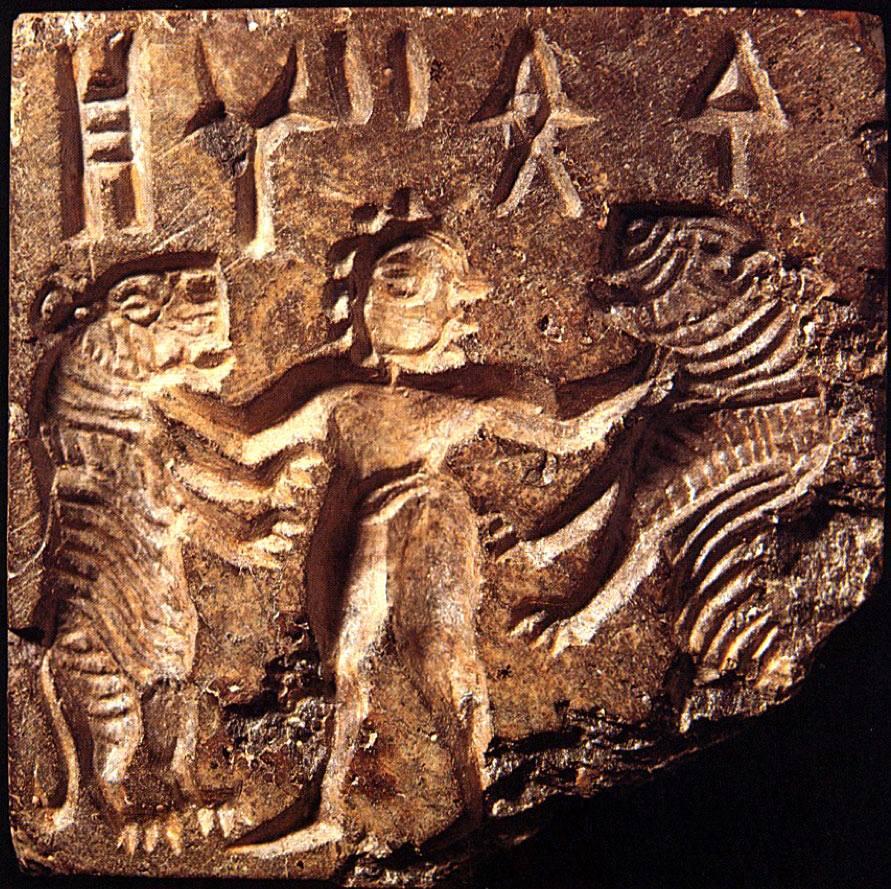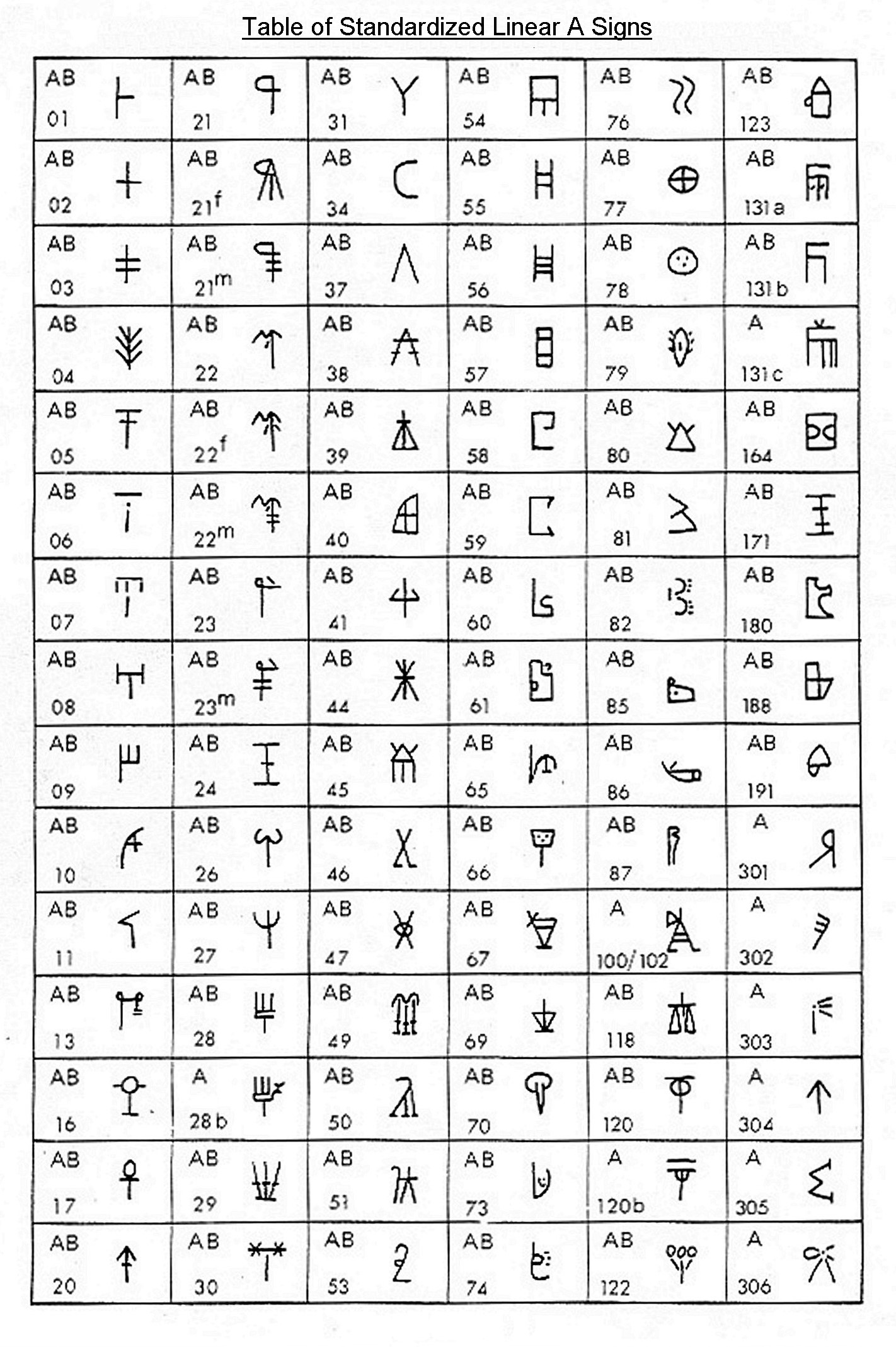From Sumer,Indus Valley, in Anatolia, Cyprus,Crete,Sicily,Sardinia to North America (northern Pacific coast indian tribes), the metal ingost had all-over in ancient times (Bronze Age ),the same physical shape: "OXHIDE"
From Who invented the oxhide ingot shape? Meluhha artisans. An archaemetallurgical journey along the Maritime Tin Route. http://bharatkalyan97.blogspot.com/2017/04/who-invented-oxhide-ingot-shape-meluhha.html
 The large oxhide ingots were signified by ḍhālako a large metal ingot
The large oxhide ingots were signified by ḍhālako a large metal ingotFrom https://ipfs.io/ipfs/QmXoypizjW3WknFiJnKLwHCnL72vedxjQkDDP1mXWo6uco/wiki/Oxhide_ingot.html
 Copper ingot from ZAKROS, Crete, displayed at the Heraclion, archaeological Museum.
Copper ingot from ZAKROS, Crete, displayed at the Heraclion, archaeological Museum.1.IN THE FOLOWINGS, I WILL SHOW SOME SIMILIRATIES OF AEGEAN SIGNS WTH THOSE SUMERIAN-ONES; such relation was noticed also not so succesfully I expecte by Iannis Kenanidis and Evangelos Papakitsos.
2. Following the transmission of meaning is another matter. Early after proto-cuneiform phase the sumerian writing evolved as one sign do add other meanings that original pictographic-one. At the point that the original meaning was lost even by sumerians! So, if signs were transmitted, one reasonable expect, that only the shape was some-how mantained, no talking that in another distant place (Aegean) to acquire another, different meaning. So, regarding the meanings I only notice some aspects, (in the limits of my understanding), not sustain an transmition of meaning. =======================================================
First Tartaria-sumerian Aegean triplet:
From http://aplaceofbrightness.blogspot.com/2008/11/moonlight-in-romania-tartaria-tablets_21.html

1.<metal ingot?<Pr-cuneif, sign KU < 2.KU:"metal,silver,shiny" > 3.Aegean sign JA and PA3
1.https://cdli.ucla.edu/tools/signlists/protocuneiform/archsigns.html Sign KU~a
sign Ga2;
INDUS SCRIPT , http://bharatkalyan97.blogspot.com/2013/04/bronze-age-glyphs-and-writing-in.html
"Impressions of two cylinder seals (Sumer) and glyph of 'ingot'. The person at the feet of the eagle-winged person carries a (metal) dagger on his left-hand, clearly demonstrating the link with this metalware catalog.Note the one-horned bull below the person who has his foot on mountain-summit. Sumerian sign for the term ZAG ‘purified precious’. The ingot had a hole running through its length Perhaps a carrying rod was inserted through this hole.
"

From http://bharatkalyan97.blogspot.com/2016/04/indus-script-16-inscriptions-with.html

Seal stamp m-308 Mohenjo-daro (DK 11794) Hieroglyph: Three strokes connecting two linear strokes: dula 'two' Rebus:dul 'cast metal' PLUS kolmo 'three' Rebus: kolimi 'smithy, forge' Thus forge for cast metal
3. From http://www.kairatos.com.gr/linear1.htm See signs JA and PA.
.

From https://www.minoanatlantis.com/End_Minoan_Writing.php See Linear A sign AB56:

----------------------------------------------------------------------
http://www.oocities.org/proto-language/ProtoLanguage-Monosyllables.htm
An archaic variant form for Sumerian sign above (Jaritz #458),
======================================================================== ========================================================================
Second Tartaria-Sumerian-Aegean triplet:
 See in the lowest row, from L>to> R: 2-nd and last signs
See in the lowest row, from L>to> R: 2-nd and last signs1.sum.pr-cuneif sign ZAG < 2.sum.ZAG:"the shine of metals; boundary, border, district', " > 3.Aegean sign A,Labrys,?Labyrinthos?
- From https://cdli.ucla.edu/tools/signlists/protocuneiform/archsigns.html Sign ZAG~a
 and sign ZAG~c
and sign ZAG~c  sign GA'AR:
sign GA'AR:
GA'AR= GAR From https://cdli.ucla.edu/files/publications/cdlj2012_002.pdf The sign GAR was used, thus, in order to denote all cereal products counted bisexagesimally, that is, virtually all barley
product rations except beer.
2. Akkadian called Sumerian - Sumerian Dictionary - Turkic World s155239215.onlinehome.us/turkic/.../SumerDictionaryEn.ht... SUMERIAN DICTIONARY. Links ... Common Sumerian words for magical purposes ..... Holy of Holies, BARAGGAL ... Metals, ZAG (the shine of metals).
Sumerian Lexicon - IS MU https://is.muni.cz/el/1421/jaro2013/PAPVB_13/um/.../Halloran_version_3.pdf (derives from zag, '
3.
From https://sites.google.com/site/raghavg602/economic-life
 see Cretan hieroglyphic signs 042 and *175
see Cretan hieroglyphic signs 042 and *175From https://linearbknossosmycenae.com/tag/labrys/

So this shape could reflect:
the shine of metals > double-axe.labrys, but also
boundary,border,district> place of the other underground sumerian's Sun,NERGAL
and at Aegeans, the place of Minotaur , in fact place of Sun-Bull-God (labyrinthos)
Proto-cuneiform sign for house, temple "AB" has the close sign: https://cdli.ucla.edu/tools/signlists/protocuneiform/archsigns.html


https://en.wikipedia.org/wiki/Nergal
Nergal seems to be in part a solar deity, sometimes identified with SHAMASH, but only representative of a certain phase of the sun.
Minotaur - Wikipedia https://en.wikipedia.org/wiki/Minotaur In Greek mythology, the Minotaur is a mythical creature portrayed in Classical times with the ... In Crete, the Minotaur was known by the name Asterion, a name shared with Minos' foster-father. ......... Some modern mythologists regard the Minotaur as a solar personification and a Minoan adaptation of the Baal-Moloch of the Phoenicians.
He dwelt at the center of the Labyrinth
, Asterion ; Greek: Ἀστερίων, gen.: Ἀστερίωνος, literally "starry") or Asterius /; Ἀστέριος)
http://www.unmuseum.org/minot.htm However, they have found what looks like a labyrinth. The labyrinth wasn't built in a cave below the palace, though. It was the palace.
labbyrinth, in fact was somebody's house: "house,temple" =====================================
This is Mr. Kenanidis and Papakitsos aproach:

So Mr. Kenanidis and Papakitsos, no double-axe !, even the sign is like, see above "signify all barley product rations" ================================================================
Apropos of above sign 57 (Linear B LA32), (Only sumerian -Aegean:
sumerian GA2 <> Aegean JA Sumerian sign GA2~a3 from : https://cdli.ucla.edu/tools/signlists/protocuneiform/archsigns.html


Niciun comentariu:
Trimiteți un comentariu